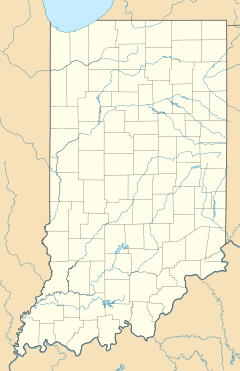Milo, Indiana facts for kids
Quick facts for kids
Milo, Indiana
|
|
|---|---|
| Country | United States |
| State | Indiana |
| County | Huntington |
| Township | Jefferson |
| Elevation | 843 ft (257 m) |
| ZIP code |
46991
|
| FIPS code | 18-49770 |
| GNIS feature ID | 439253 |
Milo is a small, unincorporated community located in Jefferson Township, within Huntington County, Indiana. An "unincorporated community" means it's a group of homes and businesses that isn't officially a town or city with its own local government. Instead, it's part of the larger county.
Contents
About Milo, Indiana
Milo is found in the state of Indiana, which is in the Midwest region of the United States. It's specifically located in Huntington County, which is known for its rich history and natural beauty. The community uses the ZIP code 46991 for its mail.
Where is Milo Located?
Milo is situated at about 40 degrees north latitude and 85 degrees west longitude. This puts it in the eastern part of Indiana. The community is about 843 feet (257 meters) above sea level. This elevation gives it a slightly higher position compared to some surrounding areas.
A Look Back: History of Milo
Milo has an interesting past, even though it was never formally planned out like many towns. This means it didn't have a specific map or design for streets and lots when it first started.
The Post Office and Its Role
A post office was opened in Milo in 1881. This was a very important event for the community. In those days, a post office was often the heart of a small settlement. It connected people to the outside world by allowing them to send and receive letters and packages. The first person to be in charge of the post office, called the postmaster, was Milo M. Sharp. The post office served the community for many years before it closed down in 1923.
Railroad Connections
Milo also played a role in transportation history. It was a station and a shipping point on the Clover Leaf Railroad. Railroads were super important in the late 1800s and early 1900s. They helped move goods like farm products and raw materials to bigger cities. Being a railroad stop meant Milo was connected to trade and travel, helping the community grow and thrive for a time.



